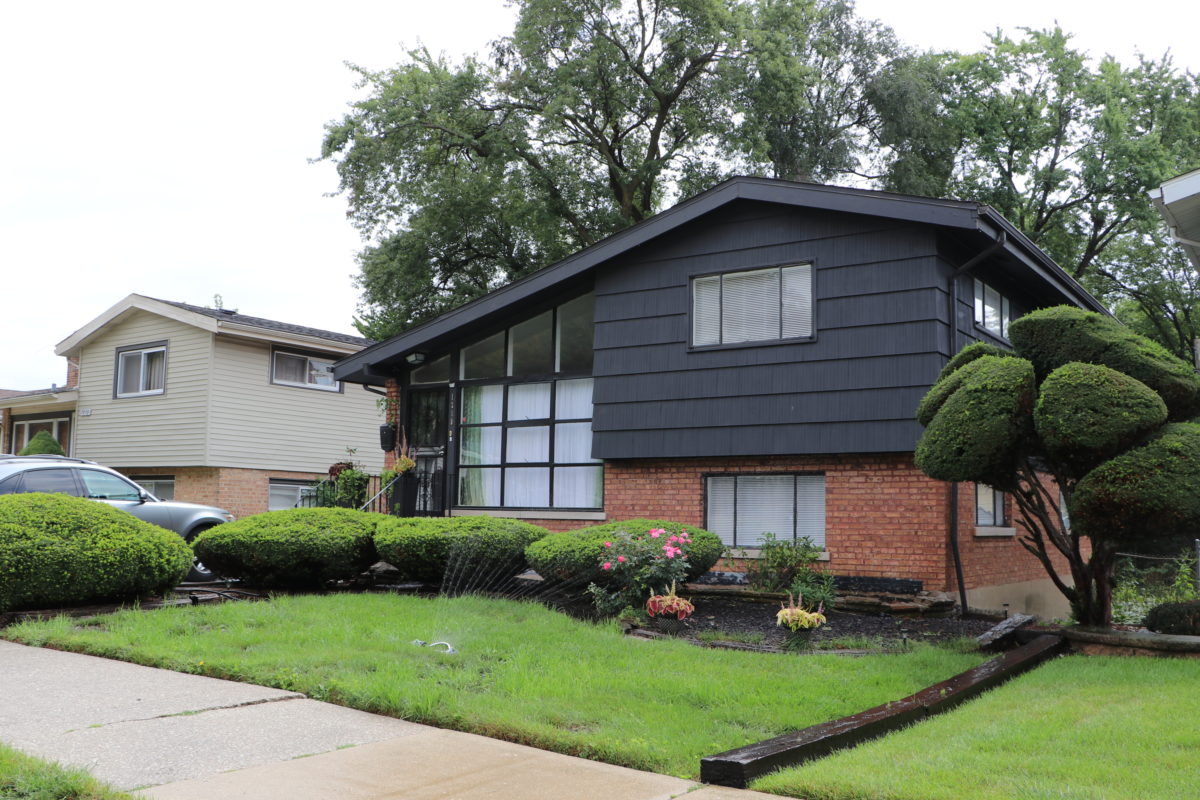Marynook: an architectural preservationist’s dream. Upon entering this community, one is immediately aware of how unique it is. Unlike the grid layout typical of most Chicago neighborhoods, Marynook is a labyrinth of curved, winding streets and cul-de-sacs, discreetly located within the Avalon Park neighborhood. The suburban-style subdivision consists of 423 well-manicured mid-century modern single-family houses, with a large park, Avalon Park (created after the neighborhood took that name), adjacent to the community. On a walk through Marynook, you will see many raised ranches and split-level homes with asymmetrical exteriors, floor-to-ceiling windows, and spacious backyards, and quite likely a few with artistically shaped geometric bushes.
Marynook was developed in 1955 by J.E. Merrion and Company in an effort to stymie suburban white flight during years after World War II. The integration of this community made nationwide news largely because the shift from a predominantly White neighborhood to Black initially happened slower than other communities and the subdivision was featured on CBS Reports (which can be found on YouTube) in the early 1960s due to its initial success.
Over time, however, white flight eventually occurred, despite there being no noticeable negative change in the quality of life, because of fear of the increasing number of Black people moving into the subdivision and surrounding areas. Marynook became inhabited predominantly by Black homeowners.
The community still flourished. Paul Flowers, a former Marynook resident who grew up in the area in the eighties, fondly recounts childhood memories of biking and playing in the subdivision with other similarly aged children.
Marynook has a homeowners association that takes pride in making this community feel like a community. The HOA generates quarterly newsletters that keep residents abreast of current neighborhood news, and it institutes guidelines in an effort to maintain property values and a good quality of life. Current resident Marcia Thomas described new neighbors being greeted with welcome wagons and annual best yard contests.
Today, a large percentage of those who still dwell in Marynook are more mature in age, and fewer children are in the neighborhood. Since COVID, the subdivision is a bit less social, but still a nice place to live, Thomas says.
If you have an interest in mid-century architecture within the boundaries of Chicago, I would invite you to visit Marynook.


Sounds like the place to be on SW…side of Chicago.